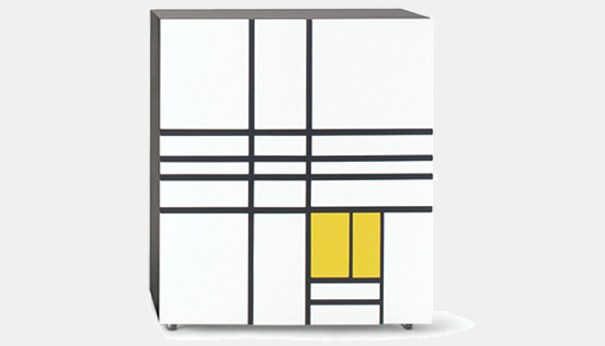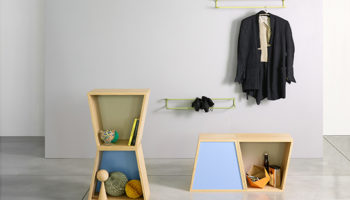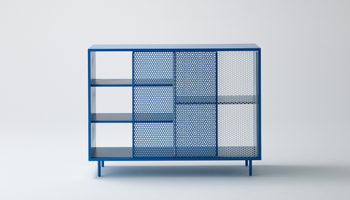Shiro Kuramata and Cappellini’s Lacquer Cabinet Pays Homage to Mondrian
A pivotal figure in the revolution of Modern Art, Piet Mondrian (1877 – 1944) began producing his renowned grid-based paintings in late 1919 and became known as “the father of geometric abstraction”. Everyone has the opportunity to see, study and admire the artist’s work in museums throughout the world but a select few will ever be able to display one of his pieces within their own home. Designer Shiro Kuramata and Italian furniture manufacturer Cappellini offer Homage to Mondrian 1 and 2 as a means of honoring Mondrian and enabling a wider audience to appreciate the artist’s influence day to day.
Homage 2. Designed by Shiro Kuramata for Cappellini.
The matte lacquer cabinets translate the artist’s oil paintings onto lacquer cabinets on castors. The grid-based composition divides the cabinet-front into containers: spaces and drawers for gathering and safekeeping. The simplest combinations of straight lines, right angles, primary colors and black result in Mondrian’s extreme formal purity. Homage 2 is a direct copy of Mondrian’s Composition with Red Blue Yellow (1930), and measures 44 inches wide. Homage 1, with its smaller yellow rectangles, measures 39 inches wide. For both cabinets, the height is 45½ inches and the depth is 15¾ inches.

Homage 1. Designed by Shiro Kuramata for Cappellini.
“Everything was spotless white, like a laboratory. In a light smock, with his clean-shaven face, taciturn, wearing his heavy glasses, Mondrian seemed more a scientist or priest than an artist. The only relief to all the white were large matboards, rectangles in yellow, red and blue, hung in asymmetric arrangements on all the walls. Peering at me through his glasses, he noticed my glance and said: ‘I’ve arranged these to make it more cheerful.’ Thus Charmion von Wiegand on Mondrian’s New York studio…”
I am generally suspicious of attempts made to translate an artists’ work into another object. While I understand the inspiration-driven desire, it seems somewhat plagiaristic and out-of-line with the artist’s intentions. Mondrian’s paintings aren’t composed of perfectly flat planes of color. Brush strokes are evident throughout, and different techniques appear to have been used for different elements. The cabinet, conversely, is composed of solid, flat lacquered planes.




Leave a Reply